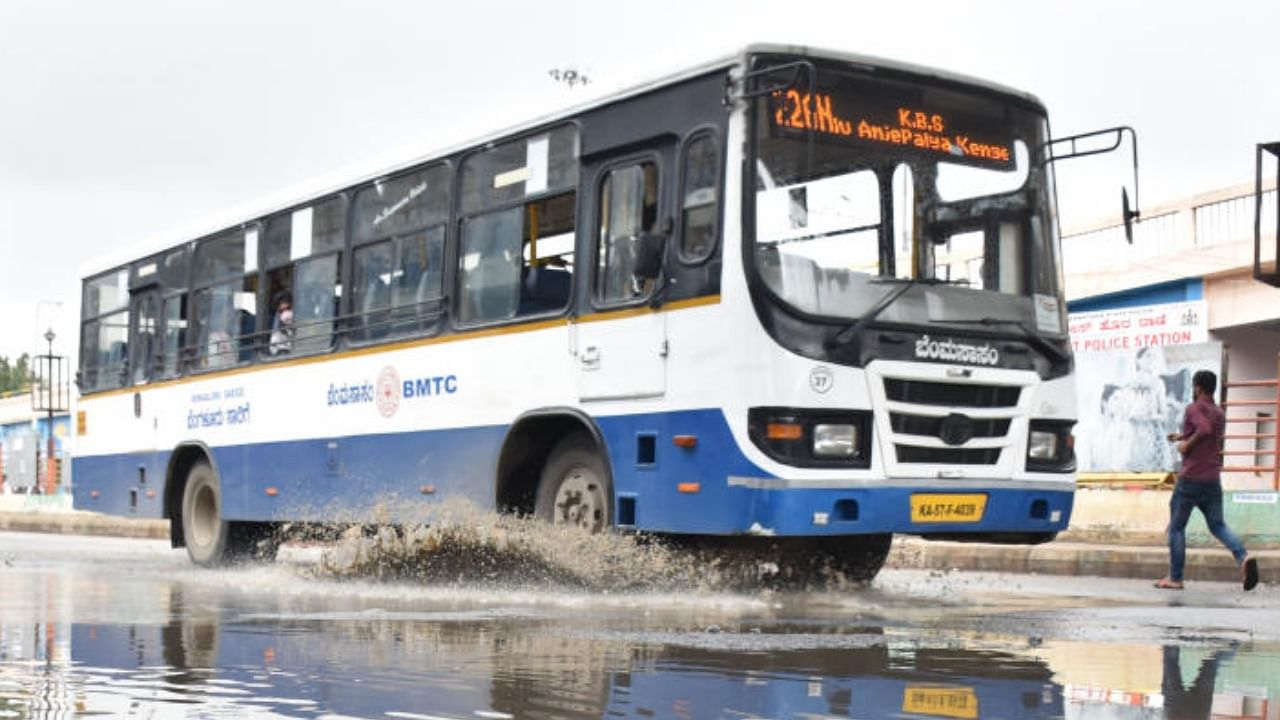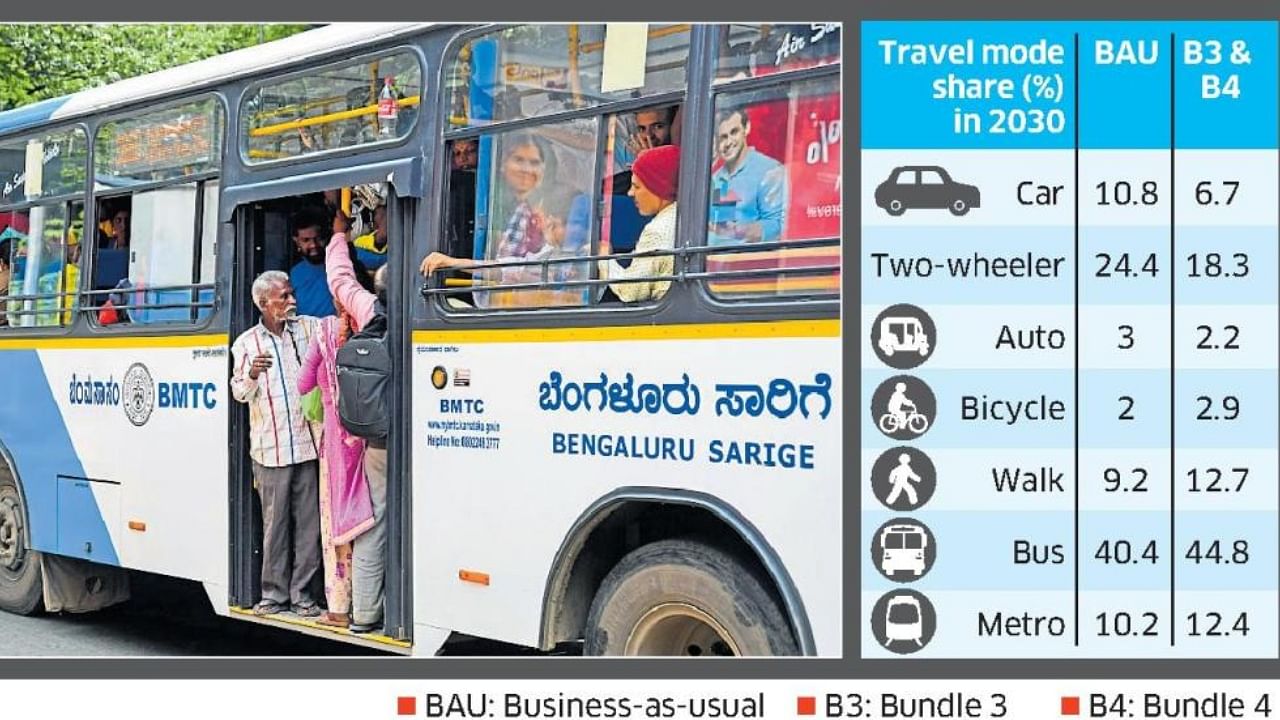

A prudent mix of policies aimed at improving public and non-motorised transport (NMT) infrastructure could significantly enhance passenger experience and reduce congestion in the Bengaluru Metropolitan Region, according to a new study by the Sustainable Transportation Lab of the Indian Institute of Science.
The study, by Harsha Vajjarapu, Ashish Verma, and Hemanthini Allirani, worked with the concept of ‘policy bundles’, or groupings of relevant policies that could reduce vehicle kilometres travelled (VKT) and exhaust and greenhouse gas emissions in two target years, 2030 and 2050.
The comparisons were made from a business-as-usual (BAU) standpoint, or a baseline scenario that estimates future trends, assuming that the present systems are left as they are,
without intervention.
Also Read: BMTC invites bids to buy 840 diesel buses
Bundle 4 (B4), which compiled seven policies — extra tax on vehicle purchase, no-car roads, congestion pricing, park and ride provisions, cycling and walking infrastructure, carpooling and dedicated lanes for high occupancy vehicles, and mixed land-use in high-density corridors — was found to be the most impactful.
The researchers used geographical information systems to add bus links covering 60.1 km and 30 km to the existing bus network, for 2030 and 2050, respectively. Metro phases 1 and 2 were also added to the transport network.
The study, titled Evaluating the Climate Change Mitigation Potential of Sustainable Urban Transport Measures in India, validated that an expanded public transit network enhanced accessibility, resulting in increased ridership. “Consequently, this strategy affects the mode share of public transport due to the impacts of the policy on overall travel cost and time spent inside and outside of public transport,” it said. The intervention, along with the improvements in NMT infrastructure, was found to reduce the usage of cars, two-wheelers, and auto-rickshaws (see box).
Costs are key
The researchers used consumer surplus as an indicator to evaluate social benefits from the policy interventions. In the context of transportation, the consumer surplus is the difference between what the price passengers are paying and the price they are willing to pay for a trip.
The additional costs imposed on cars, two-wheelers, and autos mean higher losses for the users while encouraging public transport, and NMT could lead to substantial monetary benefits for the users, the study found.
On implementation of B3 and B4 policies, private vehicle and auto users were estimated to collectively lose about $98,390 (about Rs 81 lakh)/day in 2030. In the same year, public transport and NMT users could save about $89,083 (about Rs 73 lakh)/day and $46,536 (about Rs 38 lakh)/day, respectively.